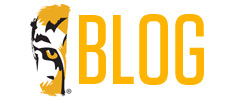A 401k is an investment account to which most people begin contributing through an employer. The account allows you to dip your toe in the world of investments while saving money toward your eventual retirement. Many employers even offer 401k matches to encourage contributions from employees. But when you leave that company you may need to do a 401k rollover.
The challenge is that most people change jobs multiple times in their careers, and it’s likely that you will eventually work for a different employer. Whether you are leaving your current job or are nearing retirement, you will need to make some decisions about your 401k.
What Are Your 401k Options?
Because 401k plans are employer-sponsored, you will need to decide what to do with your savings when you leave that employer. There are a few basic options available, and each one has advantages and disadvantages. They include the following:
- Leave your 401k – Those who have not made significant contributions to their 401k may find it prudent to leave their account with their old employer. If you have less than $1,000 in your 401k account, for example, you may end up paying fees for rolling it over that outweigh the actual value of your savings.
- Perform a 401k rollover – If your new employer offers a 401k option, you may choose to rollover the savings from your old employer to your new one. This might be a good choice if your new employer offers a contribution match and if you plan to stay with your new employer for a long time.
- Roll it into an IRA – One of the most popular 401k rollover options is to move to an individual retirement account (IRA). Unlike a 401k, it is not sponsored by an employer and you have complete control over money in the account.
If you’ve decided an IRA is right for you, here’s what you’ll need to do to make it happen. Initiating a rollover IRA shouldn’t take more than a few minutes, and once your funds are transferred, you’ll have access to a wider investment selection — and potentially lower fees.
How to start your rollover
There’s a right way to roll over your funds from a 401k and a wrong way. You don’t want the 401k provider to cut a check in your name, and you don’t want to cash out your balance. In both scenarios, you’re at risk of owing up to a third of your balance to the IRS.
Take these four steps to roll over your funds without incurring any unpleasant tax surprises:
- Decide on a Roth or a traditional IRA. If you roll into a Roth IRA, you’ll owe taxes on the rolled amount. If you want to roll over your funds without incurring taxes, stick with a traditional IRA.
- Open a rollover IRA account. Take as much time as you need to weigh the different IRA providers available to you. Talk to Member Services to find an IRA that aligns with your needs.
- Ask your 401k plan for a “direct rollover.” These two words are important: They mean that the 401k plan will cut a check directly to your new IRA account, not to you personally.
- Choose your investments. The 401k funds will enter the IRA as cash, so you’ll need to invest the money. You can work with your IRA account provider to determine where to start and which investments are best for the type of portfolio you’d like to have.
Retiring with Confidence
Saving enough money to support yourself through retirement may seem daunting, but the important thing is to start saving early. Small contributions early on in your career can grow exponentially by the time you are ready to retire.
It’s important that you know what options are available when it comes to accessing the money in your 401k account and the basics of what is called a 401k rollover into an IRA. Whether you are leaving your current job or are nearing retirement, talking to a Financial Advisor at the credit union can help make some of those tougher decisions a lot easier.




